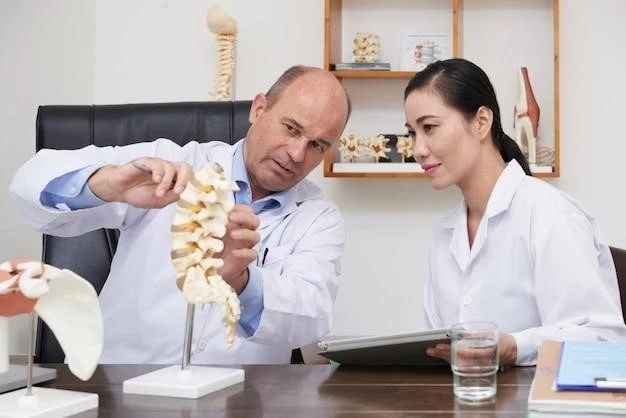Individuals affected by Branchial Arch Syndrome may experience a range of challenges in daily life.
Definition and Overview of Branchial Arch Syndrome
Branchial Arch Syndrome refers to a group of congenital anomalies affecting the development of structures derived from embryonic branchial arches. These anomalies can manifest in various regions, such as the head, neck, and face, leading to diverse clinical presentations. Understanding the etiology and characteristics of Branchial Arch Syndrome is vital for accurate diagnosis and effective management.
Genetic Link in Branchial Arch Syndrome
Understanding the genetic basis of Branchial Arch Syndrome is essential for improved diagnosis and management.
Explanation of Genetic Inheritance Patterns
Branchial Arch Syndrome can be inherited through different patterns, including autosomal dominant, autosomal recessive, or X-linked inheritance. Understanding these inheritance patterns is crucial for assessing the risk of passing on the condition to future generations and guiding genetic counseling efforts.
Identification of Genes Associated with Branchial Arch Syndrome
Research has identified various genes associated with Branchial Arch Syndrome, such as TCOF1 and TFAP2A. Mutations in these genes can disrupt normal embryonic development, leading to the characteristic anomalies observed in affected individuals. Understanding the genetic basis of the syndrome is crucial for advancing diagnostic methods and potential targeted treatments.
Symptoms of X-Linked Branchial Arch Syndrome
Individuals with X-Linked Branchial Arch Syndrome may exhibit a variety of specific clinical manifestations.
Common Clinical Manifestations
The common clinical manifestations of X-Linked Branchial Arch Syndrome may include craniofacial anomalies, ear abnormalities, hearing loss, cleft palate, and cardiac defects. These symptoms can vary in severity and presentation among affected individuals, highlighting the complexity of the syndrome and the need for comprehensive medical evaluation and management;
Variability in Symptoms among Individuals
X-Linked Branchial Arch Syndrome exhibits significant variability in symptoms and severity among affected individuals. This variability can result in diverse clinical presentations, making accurate diagnosis and personalized treatment challenging. A multidisciplinary approach is essential to address the unique needs of each individual and provide appropriate care and support.
Diagnosis and Treatment of Branchial Arch Syndrome
Accurate diagnosis and timely intervention are crucial in managing Branchial Arch Syndrome effectively.
Diagnostic Procedures and Tools
Diagnosing Branchial Arch Syndrome often involves a thorough physical examination, imaging studies such as CT scans and MRI, genetic testing, and consultation with specialists. These diagnostic tools are essential for accurately assessing the extent of anomalies and guiding the development of personalized treatment plans tailored to the individual’s specific needs.
Available Treatment Options and Management Strategies
The treatment of Branchial Arch Syndrome may involve a combination of surgical interventions, speech therapy, hearing aids, and other supportive measures tailored to the individual’s specific needs. Multidisciplinary care teams work collaboratively to address the complex medical and developmental challenges associated with the syndrome, aiming to optimize quality of life and functional outcomes for affected individuals.
Branchial Arch Syndrome Research Updates
Stay informed about the latest advancements and breakthroughs in Branchial Arch Syndrome research.
Recent Discoveries and Breakthroughs
Recent research in Branchial Arch Syndrome has led to significant discoveries, including novel genetic mutations associated with the condition and innovative treatment modalities. These breakthroughs offer promise for improved diagnostic accuracy, personalized interventions, and better outcomes for individuals affected by the syndrome. Stay updated on the latest advancements shaping the field of Branchial Arch Syndrome.
Ongoing Studies and Future Directions
Ongoing research efforts in Branchial Arch Syndrome focus on elucidating additional genetic factors, exploring new treatment modalities, and enhancing early diagnostic techniques. These studies aim to further understand the complexity of the syndrome, improve therapeutic outcomes, and provide valuable insights for future clinical practice. Staying informed about ongoing research is essential for advancing care and support for individuals with Branchial Arch Syndrome.
Support and Resources for Individuals with Branchial Arch Syndrome
Access valuable support networks and resources to assist individuals and families living with Branchial Arch Syndrome.
Support Groups and Organizations
Various support groups and organizations provide essential assistance and community for individuals and families affected by Branchial Arch Syndrome. These groups offer emotional support, educational resources, and advocacy initiatives to promote awareness and understanding of the syndrome. Connecting with these supportive communities can help navigate the challenges associated with Branchial Arch Syndrome.
Educational Materials and Counseling Services
Access to educational materials and counseling services is fundamental for individuals and families navigating Branchial Arch Syndrome. These resources provide valuable information, guidance, and emotional support to enhance understanding of the condition and promote well-being. Utilizing educational materials and counseling services can empower individuals to cope effectively with the challenges associated with Branchial Arch Syndrome.
Impact of Branchial Arch Syndrome on Daily Life
Addressing the impact of Branchial Arch Syndrome is crucial in enhancing quality of life for affected individuals.
Challenges Faced by Individuals and Families
Individuals and families affected by Branchial Arch Syndrome encounter various challenges, including physical, emotional, and social complexities. These challenges may encompass coping with medical interventions, navigating educational and social environments, and addressing emotional well-being. Understanding and addressing these multifaceted challenges are essential for comprehensive care and support for individuals living with Branchial Arch Syndrome.
Coping Mechanisms and Quality of Life Considerations
Developing effective coping mechanisms and prioritizing quality of life considerations are essential for individuals and families affected by Branchial Arch Syndrome. Emphasizing holistic well-being, including physical, emotional, and social aspects, can enhance resilience and overall quality of life. Integrating coping strategies and addressing quality of life considerations play a significant role in navigating the challenges associated with Branchial Arch Syndrome.

Prevention Strategies for X-Linked Branchial Arch Syndrome
Explore genetic counseling and family planning options to reduce the risk of X-Linked Branchial Arch Syndrome.
Genetic Counseling and Family Planning Options
Genetic counseling offers valuable insights into the inheritance patterns of X-Linked Branchial Arch Syndrome, aiding in informed family planning decisions. Understanding the genetic risks and exploring reproductive options are crucial steps in reducing the likelihood of passing on the syndrome to future generations. Engaging in genetic counseling can provide individuals and families with the necessary support and information to make well-informed choices.
Potential Approaches to Minimize Risk Factors
Implementing strategies such as preimplantation genetic diagnosis (PGD) and prenatal testing can help identify and minimize the risk factors associated with X-Linked Branchial Arch Syndrome. These proactive approaches enable early detection of genetic anomalies, allowing for informed decision-making regarding pregnancy management. By considering these approaches, individuals can take proactive steps to reduce the risk of passing on the syndrome to future generations.
